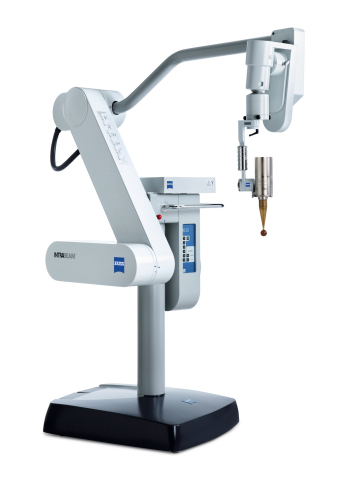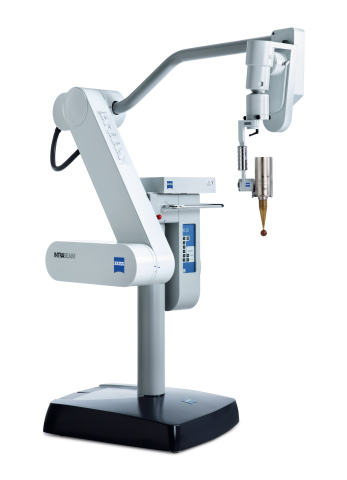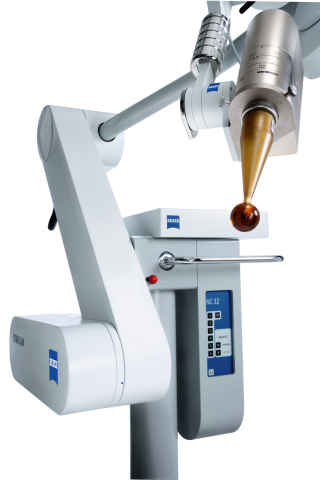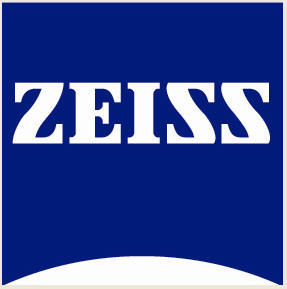JENA, Germany--(BUSINESS WIRE)--Results of the TARGIT-A clinical trial published in The Lancet
A new clinical trial for breast cancer, published in The Lancet, one of the world’s leading medical journals, shows that a single fraction of targeted intraoperative radiotherapy (TARGIT) delivered with the ZEISS INTRABEAM® at time of lumpectomy is non-inferior to traditional external beam radiation (EBRT) delivered over three to six weeks after breast conserving surgery, for a select group of patients.
“The most important benefit of TARGIT for a woman with breast cancer is that it allows her to complete her entire local treatment at the time of her operation, with lower toxicity to the breast, the heart and other organs. Our research supports the use of TARGIT concurrent with lumpectomy, provided patients are selected carefully, and should allow patients and their clinicians to make a more informed choice about individualizing their treatment, saving time, money, breasts, and lives,” according to Professor Jayant S. Vaidya, FRCS MD, PhD from the international TARGIT investigators group, in the accompanying press release on the Lancet publication of the research study.
Since 1998, the international TARGIT research group has investigated whether radiotherapy targeted to the tumour bed at the time of surgery can reduce the risk of recurrence in early breast cancer as effectively as the traditional 3- to 6- week EBRT.
Traditionally, whole-breast EBRT is given after lumpectomy (breast conserving surgery) to reduce the risk of recurrence of cancer in the breast and of breast cancer mortality. EBRT typically is given over a course of three to six weeks requiring patients to receive treatment at radiotherapy centers for 20-30 days. In some cases, women suitable for breast conserving surgery, but living far from a radiotherapy center and unable to attend daily post-surgical treatments may even undergo mastectomy as an alternate.
In the TARGIT approach, during surgery after removal of the tumor, the affected tissue in the tumor bed is irradiated from within the breast using the ZEISS INTRABEAM. The TARGIT study results show that targeted intraoperative radiotherapy delivered with ZEISS INTRABEAM can reduce the risk of recurrence of the cancer as effectively as a traditional 3- to 6-week course of whole breast irradiation in selected women with invasive ductal carcinoma.
The TARGIT-A trial has been to date the largest multicenter randomized clinical trial for intraoperative radiotherapy (IORT) in the field of partial breast irradiation, with 3451 patients in 33 international centers from Europe, the United States, and Australia. The TARGIT-A trial followed an individualized risk-adapted approach, meaning, that patients who had received TARGIT at the time of surgery showed in the final pathology additional unforeseen risk factors, received supplemental EBRT, which occurred for about 15% of the patients. The 5-year results for local recurrence and the first analysis of overall survival of the TARGIT-A trial have now been reported.
Comparing TARGIT with EBRT the difference in 5-year local recurrence between the two treatments was less than 2.5% and therefore considered “non-inferior” to standard EBRT (daily doses for 3-6 weeks) in treating the cancer. Overall mortality was 3.9% with TARGIT and 5.3% with EBRT, due to fewer deaths from cardiovascular causes and other cancers.
Based on statistical comparison of breast cancer recurrence, number of deaths and side effects of TARGIT versus EBRT the authors conclude: “TARGIT concurrent with lumpectomy within a risk-adapted approach should be considered as an option for eligible patients with breast cancer carefully selected as per the TARGIT-A trial protocol.”
“We commend the international TARGIT group pioneered by Professor Jayant Vaidya and Professor Michael Baum for this outstanding research on this new treatment option that can benefit many breast cancer patients. The TARGIT group’s research will further enhance adoption by radiation oncologists and breast surgeons worldwide and will broaden the application of our ZEISS INTRABEAM for this new option in the fight against cancer,” says Dr. Ludwin Monz President and CEO of Carl Zeiss Meditec AG.
The Lancet publication of the results of the TARGIT-A study can be found at http://www.thelancet.com/journals/lancet/article/PIIS0140-6736(13)61950-9/abstract
Carl Zeiss Meditec AG
Carl Zeiss Meditec AG (ISIN: DE0005313704) is one of the world’s leading medical technology companies. The company supplies innovative technologies and application-oriented solutions designed to help doctors improve the quality of life of their patients. It is a provider of total solutions for the diagnosis and treatment of eye diseases, including implants and consumables. The company creates innovative visualization solutions in the field of microsurgery. The medical technology portfolio of Carl Zeiss Meditec is rounded off by promising future-oriented technologies such as intraoperative radiotherapy. In fiscal year 2011/12 (ended 30 September) the 2,400 employees of the company generated revenue totaling EUR 862 million. Carl Zeiss Meditec headquarters are located in Jena, Germany.
The company has subsidiaries in Germany and abroad; more than 50 percent of its employees are based in the USA, Japan, Spain and France. The Center for Application and Research in India (CARIn) in Bangalore, India, and the Carl Zeiss Innovation Center for Research and Development in Shanghai, China, strengthen the company's presence in these fast-growing countries. Around 35 percent of Carl Zeiss Meditec shares are in free float. The remaining approx. 65% are held by Carl Zeiss AG, one of the world’s leading groups in the optical and optoelectronic industries. In the markets for Industrial Solutions, Research Solutions, Medical Technology and Consumer Optics, Carl Zeiss has contributed to technological progress for more than 160 years and enhances the quality of life of many people around the globe. Carl Zeiss AG, Oberkochen, is fully owned by the Carl Zeiss Foundation.
For more information, please go to: www.meditec.zeiss.com





